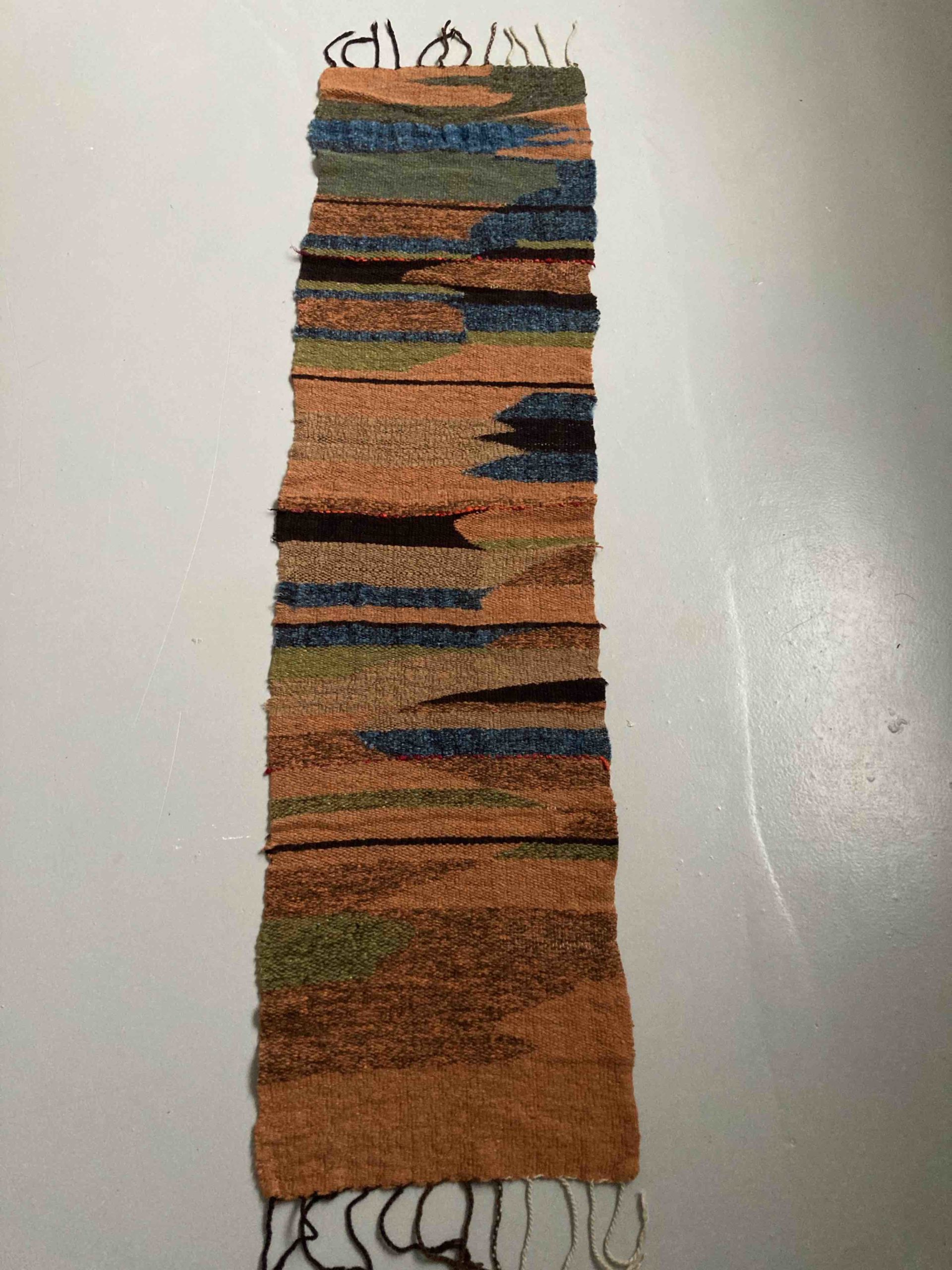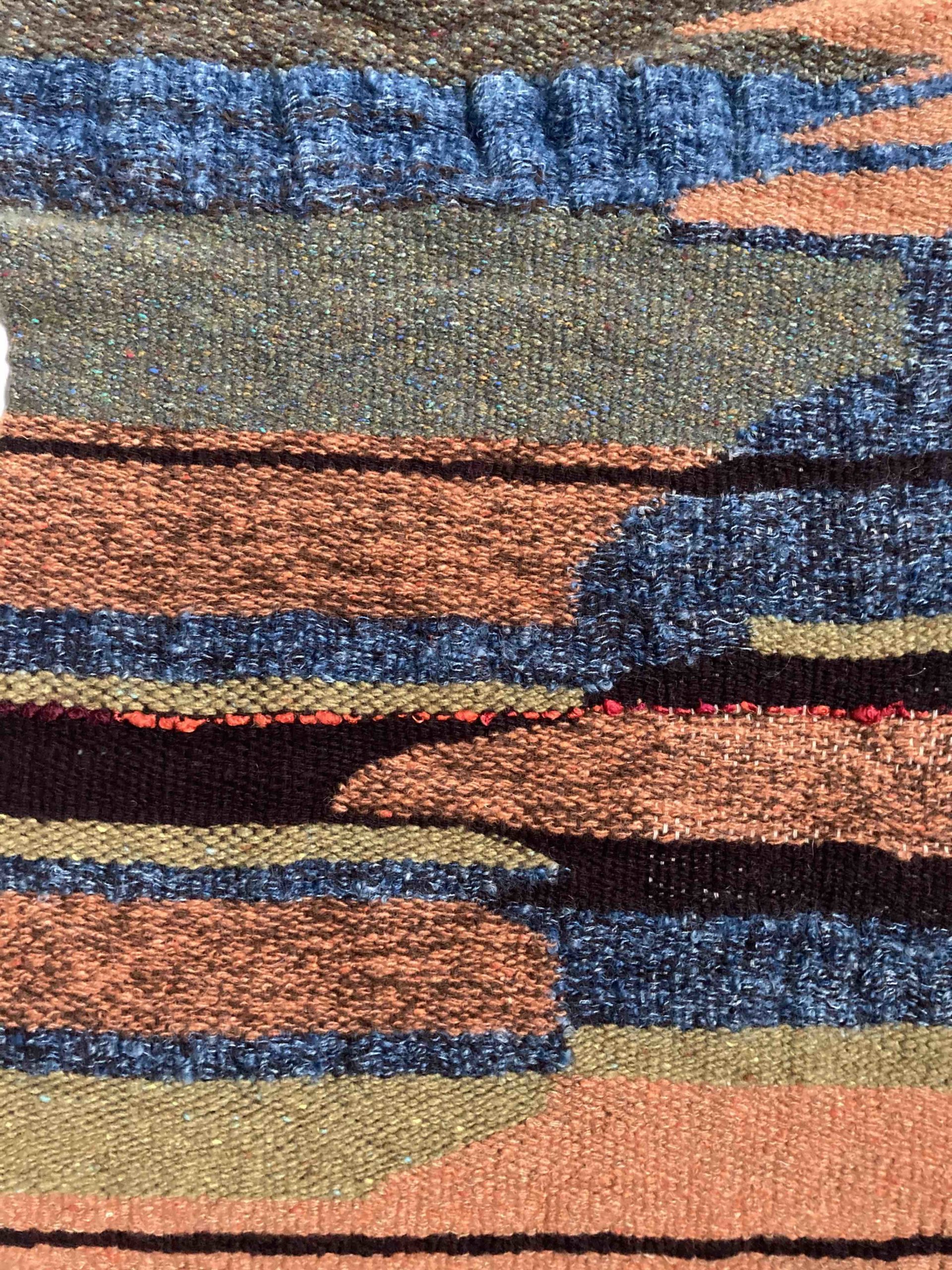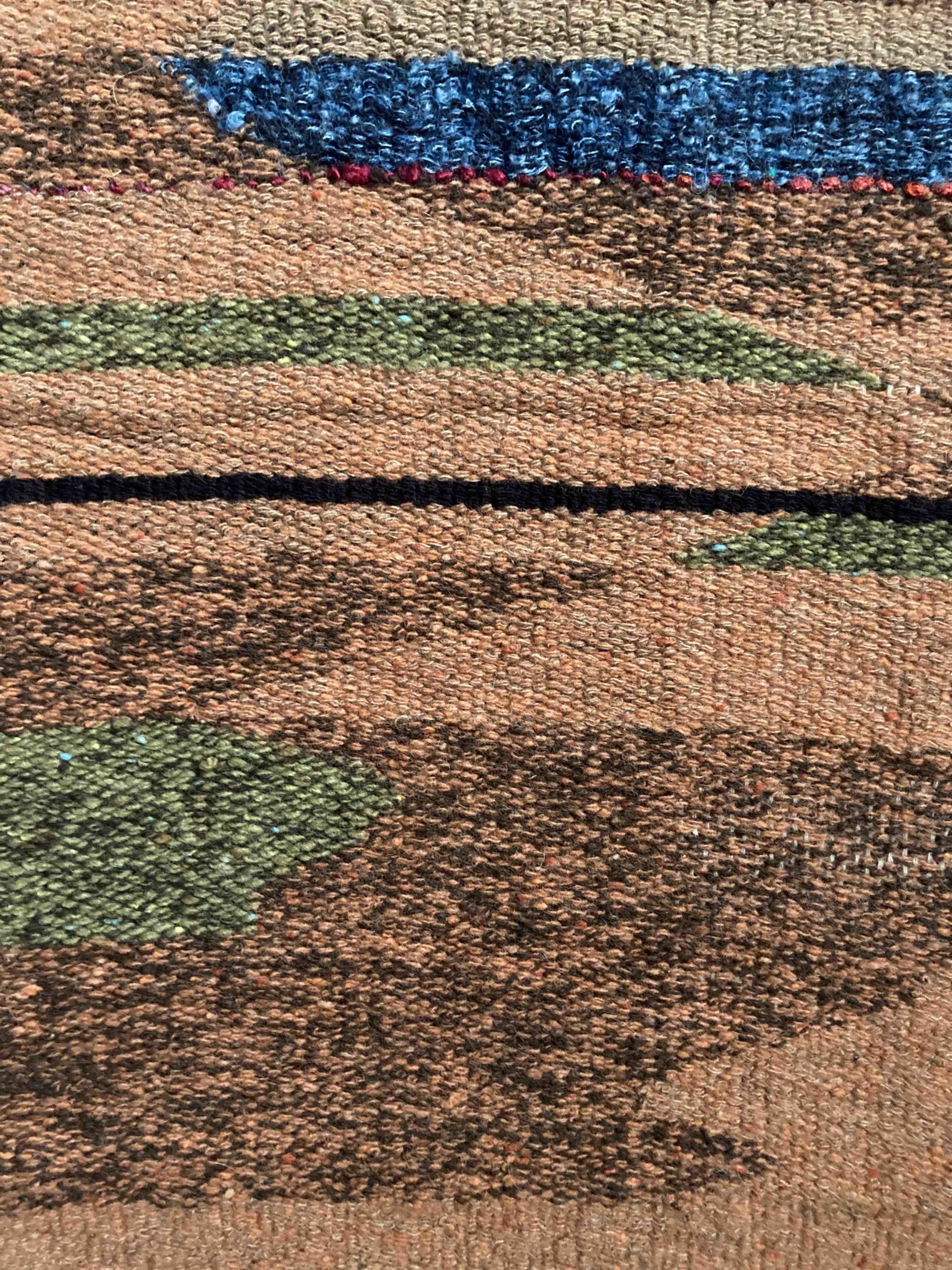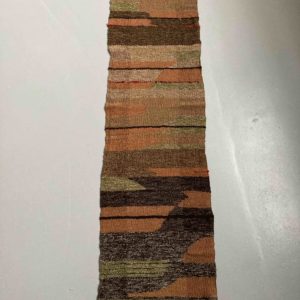£245.00
Alpujarras Scarf 1
Warp 100% Cashmere
Weft 60% Cashmere, 40% British wool
Natural indigo dip dye, vegetable dyes
150 x 39 cm, excluding fringe
Description
Femke Lemmens: Alpujarras scarf 1, is warm in every sense. Femke has created a scarf as a work of art, with tremendous care. It is comforting and thick while still remaining delicate. The colours glow in their richness and variety. Femke Lemmens visited Adalucia in S. Spain, one summer and as a result, created these weaves in blue, red, and russet. She wanted them to evoke the blueish cold evening air coming down onto the red of the Alpujarras mountains. To enhance the effect, while dyeing, she strung the scarves up in a woven shibori technique. She then unfolded them after they were dry. This has contributed to the ripple effect of the colours.
This scarf could be seen on display at GroundWork Upstairs in Femke Lemmens, Saori Weaving, 2017.
About the artist
Femke Lemmens uses natural fibres and naturally obtained colours, to create weaves with a certain lightness and movement. Creating her own colours at home from plants and kitchen waste, has become an engaging and integral part of her whole process.
Femke enjoys the age old traditions in this interplay between dyeing and weaving. It fits perfectly with the freedom she has discovered through SAORI weaving. The term was invented in the 1970s in Japan by Misao Jo (1913 – 2018). SA comes from the word “SAI” in Zen vocabulary: everything has its own individual dignity | ORI means weaving.
As Femke says: ‘Weaving can be a very momentous expression for an artist. Changes along the way lead to new inspirations. We end up slowly growing something true to who we are. The products of this kind of SAORI weaving are alive.‘
Japanese weaver Misao Jo was the first to realise that irregularities in her weavings were an expression of her creative spirit. She wanted them to be positive expressions of her personality, not imperfections. As a teacher, she encouraged her many pupils to explore freely as young children do. The idea was to see everything with wonder, to break with convention and be true to their instincts.




